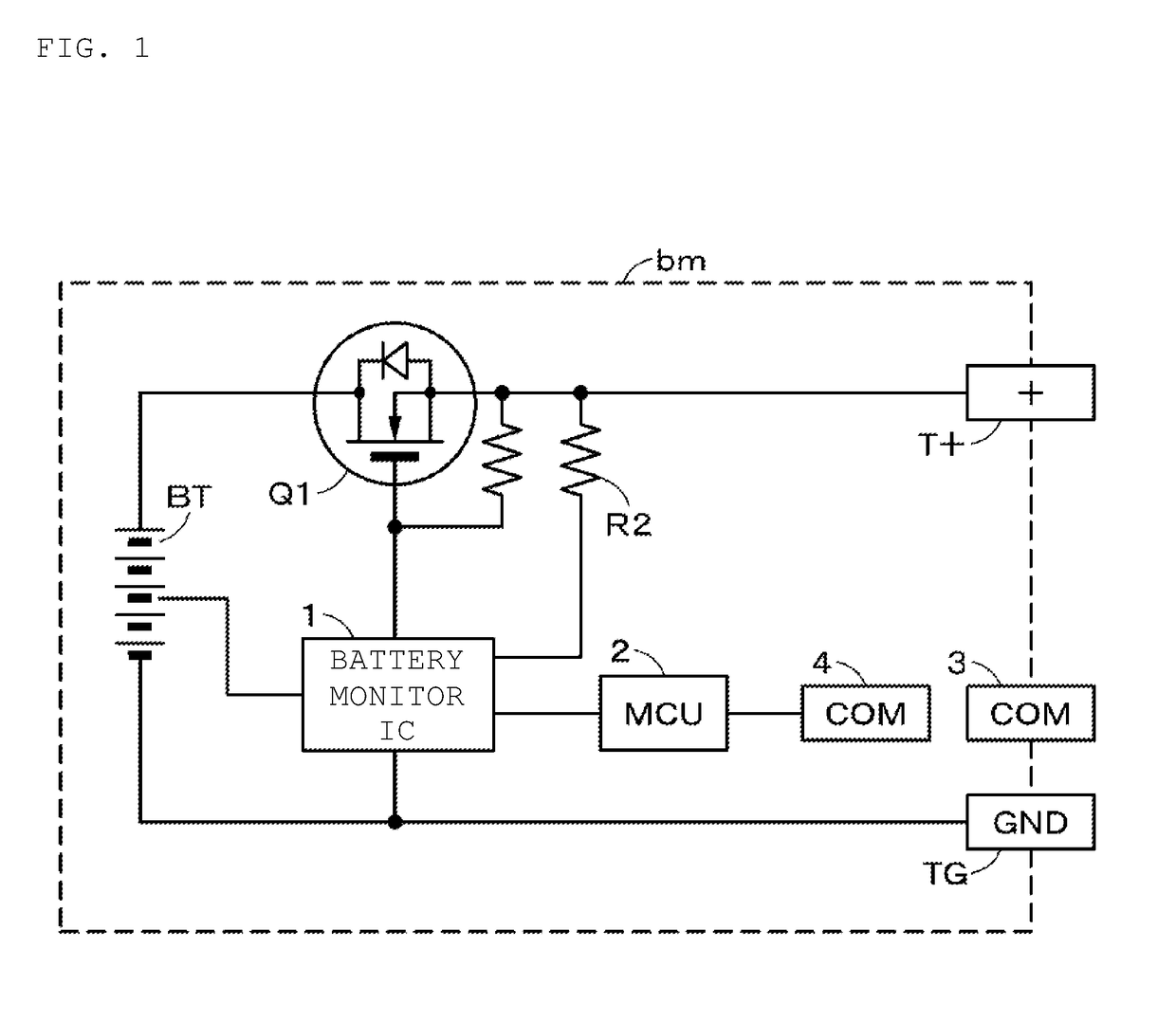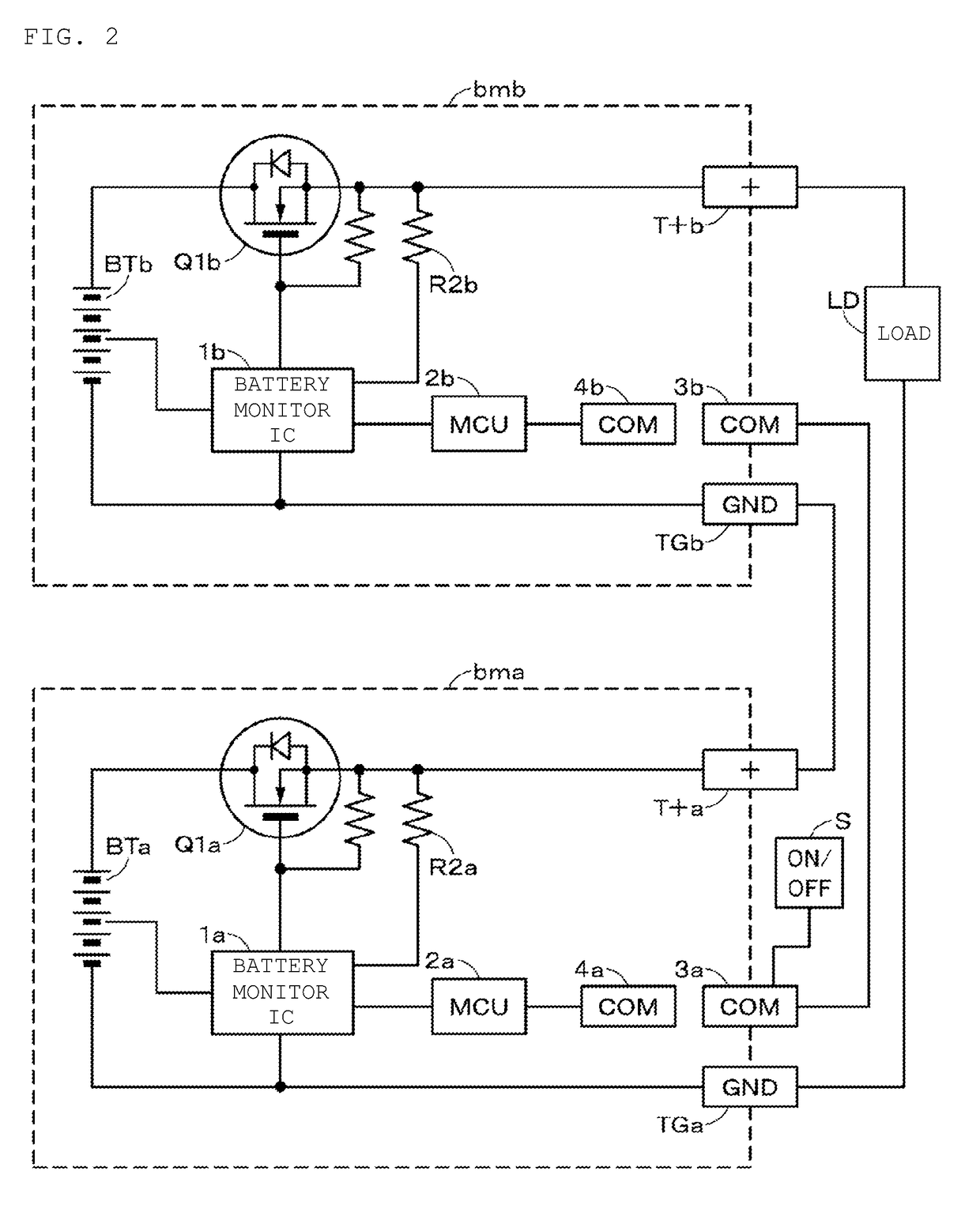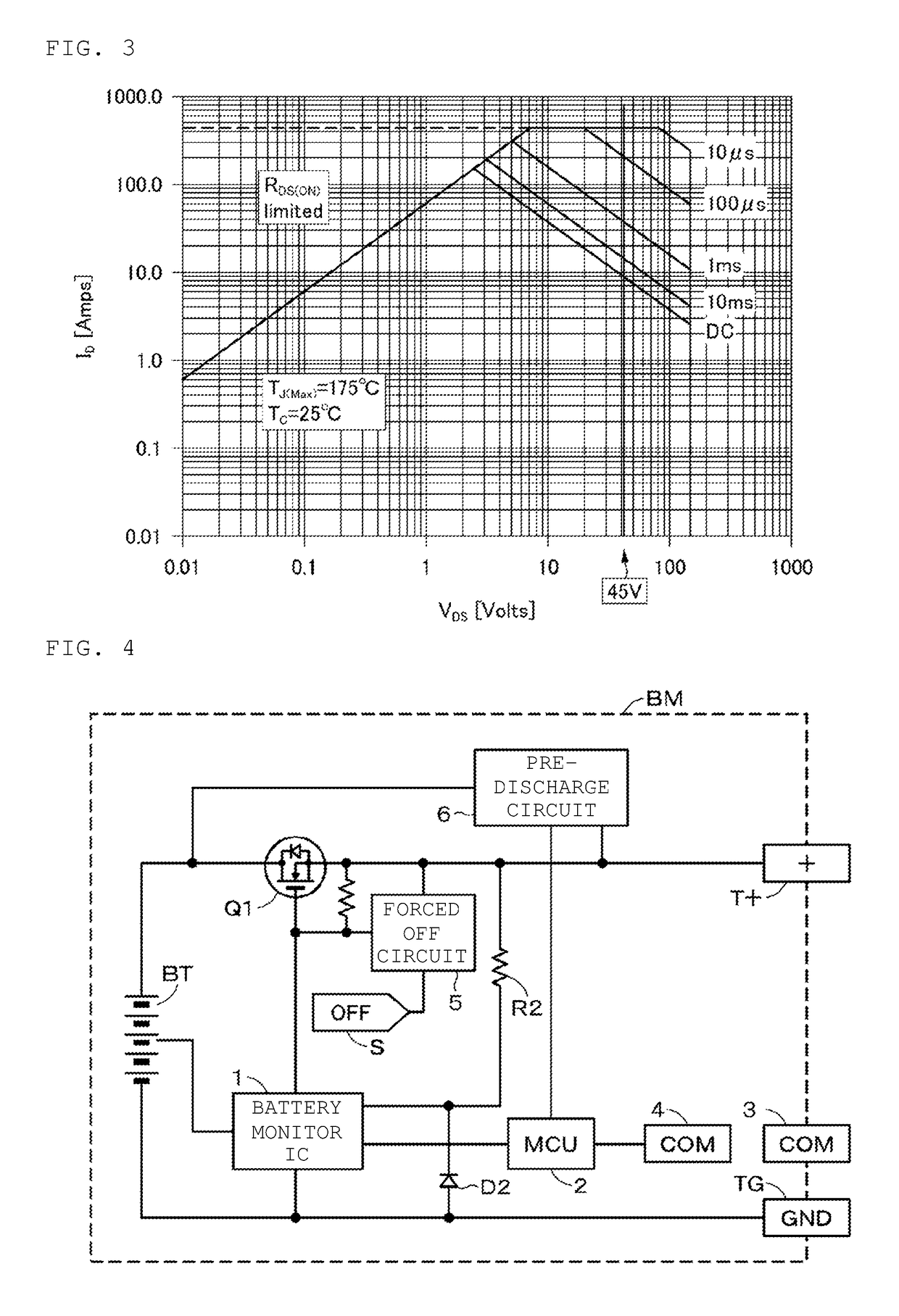Battery module and battery device
- Summary
- Abstract
- Description
- Claims
- Application Information
AI Technical Summary
Benefits of technology
Problems solved by technology
Method used
Image
Examples
Embodiment Construction
[0045]Prior to describing the embodiment of the present technology, the conventional problems will be described. FIG. 1 shows a configuration of a conventional battery module bm. The+side of the battery part BT in which a plurality of battery cells are connected in series is led out as the positive output terminal T+ through the drain-source path of the N-channel MOSFET (Q1). That is, the FET (Q1) is connected to the high side. A power MOSFET capable of a large current is used as the FET (Q1). The negative (−) side of the battery part BT is led out as the negative output terminal TG. The FET (Q1) has the function of a discharge load switch. An N-channel MOSFET is connected between the FET (Q1) and the+side of the battery part BT, as a charge load switch, so that the drain-source path is opposite to that of the FET (Q1), but for simplicity the FET is omitted. The battery part BT is not limited to a configuration in which a plurality of battery cells are connected in series, but may b...
PUM
 Login to view more
Login to view more Abstract
Description
Claims
Application Information
 Login to view more
Login to view more - R&D Engineer
- R&D Manager
- IP Professional
- Industry Leading Data Capabilities
- Powerful AI technology
- Patent DNA Extraction
Browse by: Latest US Patents, China's latest patents, Technical Efficacy Thesaurus, Application Domain, Technology Topic.
© 2024 PatSnap. All rights reserved.Legal|Privacy policy|Modern Slavery Act Transparency Statement|Sitemap



